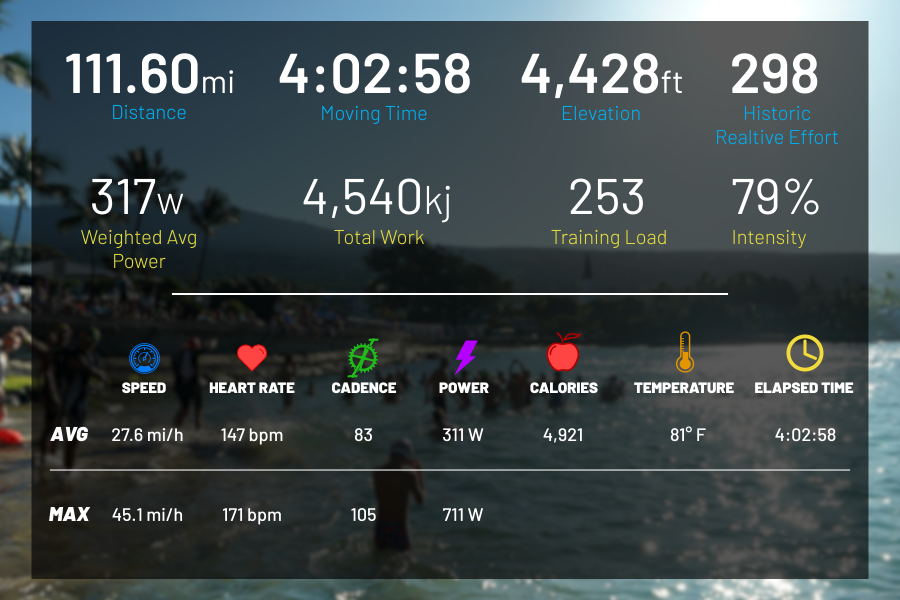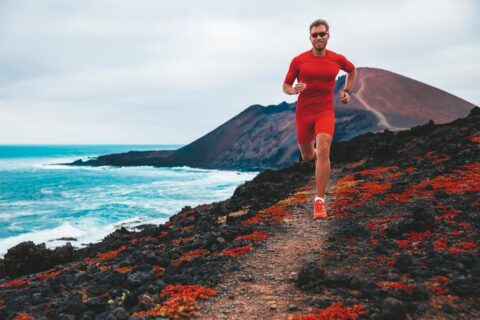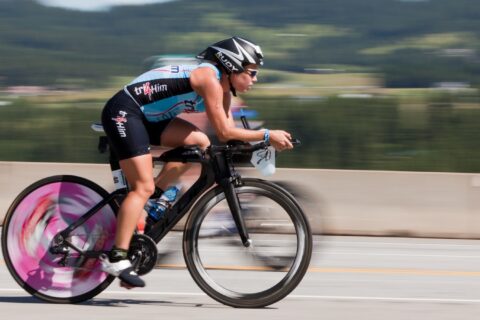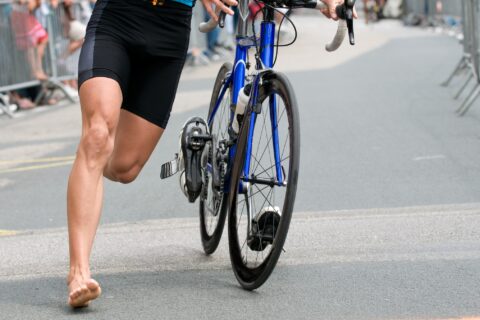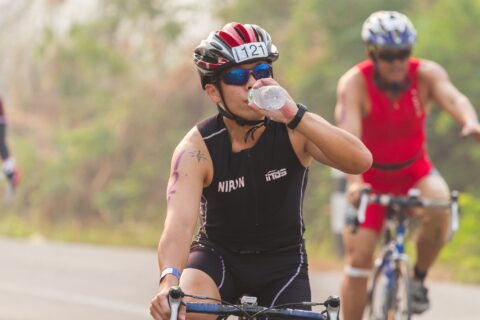The much-anticipated 2022 edition of the Ironman World Championship was a race unlike any other we’ve seen, with excitement from start to finish. This was partly due to the pandemic-induced hiatus (there had been no race on the Big Island since 2019), but also due to the hype surrounding a certain two Norwegians (Gustav Iden and Kristian Blummenfelt), who were bringing an impressive couple of years of performances into the race and were expected to do amazing things, especially on the run. This could have led to an underwhelming first half of the race, but a young Frenchman by the name of Sam Laidlow had other ideas about that.
Laidlow set the Kona bike course on fire with a new course record of 4:04:36, which was almost five minutes faster than the previous best bike split that was owned by pro cyclist-turned-triathlete Cameron Wurf. The rules in Kona state that for a record to stand, the athlete must complete the race—and there were many doubting whether Laidlow would even make it through the run and to the finish line given the watt bombs he’d been dropping on the bike. Yet he showed that his ride was hardly a kamikaze effort. He used his bike strength to set up a similarly impressive marathon, only foiled by Iden running a blisteringly fast 2:36 marathon.
However, perhaps most impressive of all was the fact that Laidlow did the whole race practically as an individual time trial, off the front for pretty much the entirety of the race, taking minimal help/advantage from those around him. Because of this, in my opinion, Laidlow was, hands down, the fittest guy out there. Iden was just a little more strategic in how he distributed that fitness through the day. That is, with a few tweaks to Laidlow’s strategy, he can arguably go faster. Let’s take a deep dive into the data to see how it all played out and why I think Laidlow could potentially win the thing in 2023.
First of all, the summary stats (courtesy of Laidlow’s Strava account):

The numbers are unsurprisingly big with an average power of 311 watts and almost 5,000 calories expended for the 4:04 (~26 mile per hour) bike split.
By contrast, the two men who were second and third off the bike, Iden and Blummenfelt, were more than six minutes down coming into T2 and a little over a mile per hour slower over the entirety of the bike. What makes Laidlow’s performance all the more impressive is that both Norwegians were still within two minutes of the old bike record set by uber-biker Wurf. This just shows some amazing performances all around. So, where and how did Laidlow distance himself? Let’s take a closer look at how the bike played out (courtesy of data from Ironman.com’s athlete tracker and Laidlow’s Strava data).
You can see here Laidlow and Iden’s bike speeds for each checkpoint (from the athlete tracker) along with the Frenchman’s average bike power for each checkpoint (from his Strava account):

Laidlow exited the swim at the very front of the race—second out of the water—in a big group of 16 athletes including Florian Angert, Iden, and Blummenfelt. Determined not to get boxed in early at the back of the pack, he pushed hard out of T1 for the first 10 miles of the bike to establish position. His average power from miles two to 10 was a colossal 348 watts! By the time they hit Mile 10, this gave Laidlow and (eventual 4th place finisher) Max Neumann a minute gap on the big group containing race winner Iden.
After establishing this gap, you can see that Laidlow scaled the power back to a more “moderate” 315-320 watts through to Mile 25. Despite this still very solid output, when the riders hit the Queen K, they encountered an 8-12 mph wind coming from the north, i.e., the direction they were heading. So, with the headwind, the pack was pretty much holding ground on the two leaders, which is something you can see in both Iden’s and Laidlow’s speed lines being on top of each other at that point. Seeing this, Laidlow scaled the power back further between Miles 25 to 40 to a very manageable (for him!) 285-305 watts.
Smartly, he put in his next big effort on the low air speed section of the course, the climb coming out of Kawaihae. Here he averaged 319 watts between Miles 40 and 50 and added another 30 seconds to his gap over the main pack. However, seeing this gap start to widen, the Norwegians went off the front of the main pack determined not to lose too much time to the pack up the road (Laidlow, Neumann, and Magnus Ditlev).
Keeping it in the big ring
When they made the turnaround in Hawi, that front pack had 2.5 minutes on the main pack and, as they made the turnaround, were facing a 10mph headwind for the descent. Laidlow, pretty incredibly, kept his power at 300+ watts for the descent, averaging 30+ mph for the segment into Kawaihae. I’m guessing there was a BIG ring at play there. With Laidlow’s big effort on the descent, the pack had splintered at this point, with most of the chasers now six minutes back and the Norwegians in no-man’s land in between as they hit Kawaihae.
As the road turned up out of Kawaihae, Laidlow lifted his power again and was averaging a pretty amazing 333 watts for one of the toughest sections of the course, the climb up to the scenic overlook over Kiholo Bay at around 95 miles in. Amazingly, he put four minutes into the Norwegians and Neumann and seven minutes into the next big pack in this section. Being strong in this section while almost everyone else in the race is feeling the effects of a 100-mile ride helped set up his six-minute gap on the Norwegian chasers and his 10+ minute gap over most of the field.
Plenty more where that came from
As impressive as this was, I’d suggest that, in total race terms, Laidlow can go quite a bit quicker. Through the initial 25 miles of the course, he put out a lot of energy with his nose in a headwind trying to, fairly unsuccessfully, establish a gap on the main pack. He was leading going through all checkpoints from Miles 10 through 50, with Neumann saving energy on his wheel and the pack rotating through a minute behind him. By contrast, Iden, very intelligently, was about two seconds behind Blummenfelt on each of these check points, saving valuable energy for the run. To see what Laidlow was able to do for the remainder of the bike and for the run given this extra energy expended early on, is nothing short of mind-blowing! I’m sure Laidlow and his team will be doing a deep-dive analysis and refining the strategy for next year and, with that slightly ‘tweaked’ strategy, I think we could be in for an even more exciting race in 2023.
